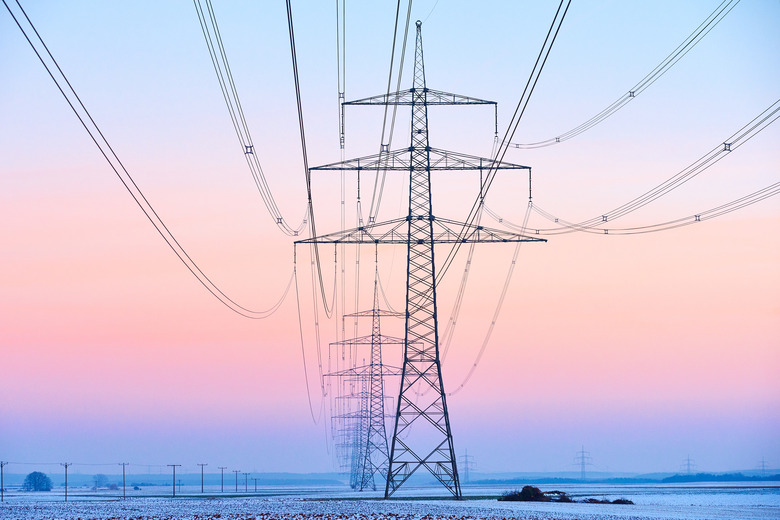What Are Each Of The Wires On Utility Power Poles?
Newly constructed suburban areas are usually free of the wires that stretch across the sky, but in most places, power lines and power poles are easily seen alongside city streets and communities. If you've ever wondered what those wires are, typically these are lines from telephone, cable television and power companies. Each company maintains responsibility for their own line. Utility poles consist of three distinct layers or spaces. The top layer is the supply space. The middle layer is the neutral space and the bottom layer is the communications space.
Static Wire
Static Wire
The utmost top line of the utility pole is the static wire. The static wire bleeds off lightning surges from the power lines when lightening strikes during a thunder storm. The static wire is connected to the grounding conductor.
Transmission Lines
Transmission Lines
Below the static line are three power lines called transmission lines. Transmission lines get typically labeled "A," "B," and "C," and called the "A-B-C Phase." They conduct high voltage electricity from power plants to substations. Substations reduce the amount of voltage from 69 to 500 kilovolts down to five to 30 kilovolts and then send the power out on feeder lines connected to buildings and homes.
Grounding Conductor
Grounding Conductor
Directly beneath the transmission lines is the multi-grounded neutral line, or MGN. The transmission lines connect to a grounded neutral conductor that gives a return path for electricity. The ground wire or grounding conductor is also called the multi-grounded neutral line. The grounding conductor runs the entire length of the pole. It is connected to the ground rod.
Primary and Secondary Line
Primary and Secondary Line
Located under the MGN are the primary and secondary lines. The primary line carries electricity to substations at five to 30 kilovolts. Supported by crossbars on older types of utility poles, the secondary line is also called the secondary service drop. The service drop leads from the utility pole lines to a home. It is made up of three conductor wires. Two of them are insulated wires that carry electricity from the transformer; the third is a bare neutral wire that connects to the grounding wire. These lines have a voltage of 120 to 240 volts.
Neutral Space
Neutral Space
The neutral space is a safety zone for workers clear of any lines. Found between the secondary supply line and the highest communication cable, this zone provides room for linemen and communication workers who need to climb up on utility poles to do maintenance on the lines.
Communications Lines
Communications Lines
Beneath the neutral space are cable television and broadband lines. The lowest line is reserved for telephone lines. Telephone lines attach to a steel strand found on the lower part of this spot on the utility pole.
Grounding Rod
Grounding Rod
The grounding rod is located in the ground near the base of the utility pole. The grounding conductor line connects to this rod and when lightning hits a static wire or the pole, the electricity travels from the static wire to the grounding wire and then is fed down into the rod, where it dissipates safely into the earth. This prevents the electricity made by lightning from getting onto power lines and causing immense surges which can result in property damage and fires.
Cite This Article
MLA
Rohlin, Alexis. "What Are Each Of The Wires On Utility Power Poles?" sciencing.com, https://www.sciencing.com/wires-utility-power-poles-7793035/. 13 March 2018.
APA
Rohlin, Alexis. (2018, March 13). What Are Each Of The Wires On Utility Power Poles?. sciencing.com. Retrieved from https://www.sciencing.com/wires-utility-power-poles-7793035/
Chicago
Rohlin, Alexis. What Are Each Of The Wires On Utility Power Poles? last modified March 24, 2022. https://www.sciencing.com/wires-utility-power-poles-7793035/
